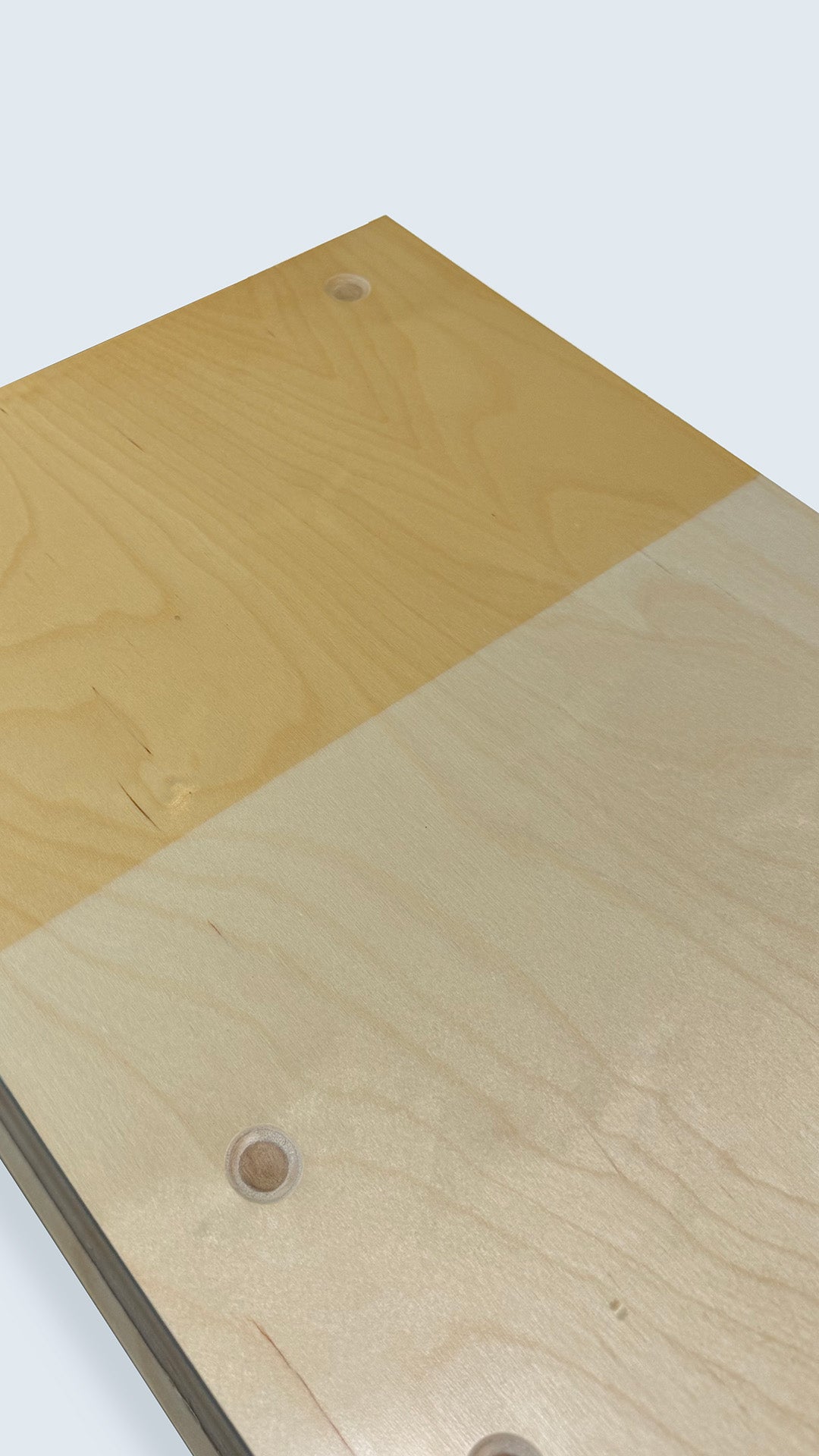How Wood Furniture Changes Color Over Time

Above: an SWG Stereocab that has been partially covered for about 1 year. Notice how dramatic the change in color is, just from exposure to light and air. The lighter colored area was covered.
Wood furniture possesses a unique characteristic that sets it apart from other materials—its ability to age gracefully and develop a distinct patina over time. As wood interacts with its environment, its color and appearance change. This natural evolution is a testament to the organic nature of wood and adds to the charm and allure of wooden furniture. Why?
- Initial Color: When wood furniture is freshly crafted, it exhibits its natural color, which can vary depending on the type of wood used. For instance, oak may have a light golden or yellowish hue, while mahogany may possess rich reddish-brown tones.
- Oxidation: As wood furniture is exposed to light, air, and humidity, it undergoes a process known as oxidation. This interaction with the environment leads to subtle changes in color, as the wood's surface reacts with oxygen. Lighter woods, such as maple or pine, tend to darken over time, while darker woods may experience a slight lightening effect. These changes are gradual and can take months or even years to become noticeable.
- Exposure to Light: One of the primary factors contributing to the transformation of wood furniture is exposure to sunlight. Ultraviolet (UV) rays from the sun cause photochemical reactions within the wood fibers, breaking down certain pigments and altering the color. The extent of these changes can depend on factors such as the intensity and duration of sunlight exposure. Over time, wood may acquire a warmer, richer tone, or develop an appealing silver-gray patina, known as "sun-bleached" wood.
- Patina Formation: The patina, often revered by furniture enthusiasts, refers to the sheen or surface appearance that develops on wood furniture over time. It is a result of multiple factors, including oxidation, wear, and exposure to environmental elements. Patina adds character and depth to the wood, giving it a unique and aged appeal. With each passing year, the patina becomes more pronounced, transforming the furniture into a cherished heirloom.
- Environmental Factors: Apart from sunlight, other environmental elements can also influence the color changes in wood furniture. Humidity plays a crucial role, as fluctuations in moisture levels can cause wood to expand or contract. In areas with high humidity, the wood may absorb moisture and darken, while dry conditions can cause it to lighten. Similarly, exposure to heat or chemicals can accelerate or alter the color change process.
- Care and Maintenance: While wood furniture naturally evolves over time, proper care and maintenance can help preserve its appearance. Regular cleaning, dusting, and polishing can protect the wood from dirt and grime, ensuring that its true colors shine through. Using protective coatings or finishes can also shield the wood from excessive sunlight, slowing down the color-changing process.
All of this means that a piece you purchase from us today will almost certainly appear a different color that one you purchase from us a year from now. But don't worry! Over time, if kept in the same environment, the color will even out.

